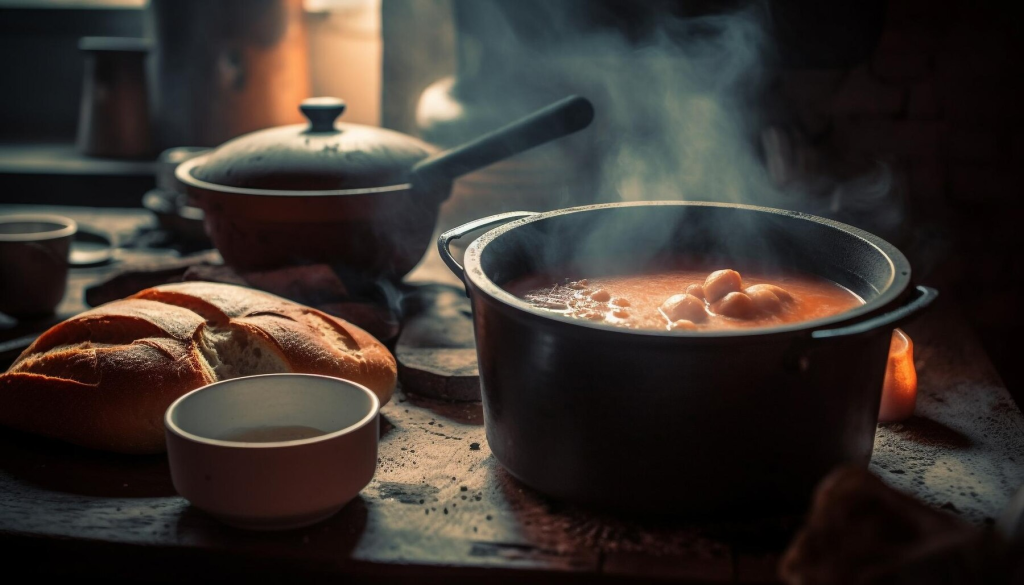Great Things Really Do Take Time – Slow Cooking!
We live in an age of air fryers, instant pots, and 15-minute recipes. But in the rush to get food on the table fast, we’re losing touch with one of the most flavorful, satisfying, and soul-nourishing techniques of all: slow cooking.
From tender roasts that melt in your mouth to soups that simmer all afternoon, slow cooking isn’t just about method — it’s a mindset. It’s about letting flavors deepen, textures transform, and time do the heavy lifting.
Here’s why the art of slow cooking is making a comeback — and why you’ll want to embrace the wait.

What Is Slow Cooking?
Slow cooking refers to cooking food at a low temperature over a long period of time — whether in a crockpot, Dutch oven, or even a low oven setting.
This method:
- Gently breaks down tough cuts of meat
- Intensifies flavors through slow simmering
- Makes meals feel rich and soulful
It’s about setting it, forgetting it, and coming back to a house that smells like magic.
Why Patience Pays Off in the Kitchen
1. Flavor Gets Better Over Time
As ingredients cook low and slow, natural sugars caramelize, proteins break down, and spices meld together. The result? Depth, richness, and a complexity you just can’t rush.
Soups, stews, and sauces benefit especially from this method, creating a well-rounded taste that quick-cooking can’t match.
🧠 A 2023 study from the Culinary Institute of America found that long-simmered broths had significantly higher flavor compound retention than quick-boiled counterparts.
2. Tough Cuts Become Tender
Collagen, the protein in tough meats, melts into gelatin with time — giving dishes that irresistible silky mouthfeel.
Perfect for:
- Chuck roast
- Pork shoulder
- Short ribs
- Lamb shank
These affordable cuts become luxurious when slow-cooked.
3. Less Active Cooking, More Free Time
Ironically, slow cooking is one of the least time-consuming cooking methods — because most of the time, you’re not doing anything at all.
Set it up in the morning, come back in the evening, and your meal is done.
4. Healthier Meals With Less Oil and Salt
Because slow cooking boosts flavor naturally, you can:
- Use less salt
- Skip heavy cream
- Reduce processed additives
It’s a wholesome, low-maintenance way to eat clean.
5. Saves Money and Reduces Waste
Cooking in bulk? Great. Using pantry staples or inexpensive cuts? Even better.
You can:
- Cook once, eat multiple times
- Freeze leftovers
- Use “clean-out-the-fridge” ingredients in stews or braises
Best Dishes
Here are classic meals that shine with time:
- 🥘 Beef stew with root vegetables
- 🍛 Chicken tikka masala
- 🐖 Pulled pork shoulder
- 🍲 Lentil soup or chili
- 🥄 Apple cinnamon overnight oats
- 🫘 Vegetarian bean casseroles
Tools to Make Slow Cooking Easier
| Tool | Best For |
|---|---|
| Crockpot / Slow Cooker | Set-and-forget weeknight meals |
| Dutch Oven | Oven-to-table stews, soups |
| Instant Pot (slow mode) | Versatile + multi-functional |
| Enamel Braiser | Fancy slow-roasted meats or pasta sauces |
How to Build the Habit
- 🕓 Start once a week: Sunday stew or Monday chili night
- 🛒 Prep ahead: Chop ingredients the night before
- 📝 Double batch: Freeze leftovers for lazy nights
- 🧘 Treat it as a ritual: Pour tea, set a timer, slow down with the meal
Slow Cooking = Mindful Cooking
In a world where speed is king, quiet act of resistance. It says: I choose flavor over fast, nourishment over noise.
When we take the time to cook slowly, we’re not just feeding ourselves — we’re reconnecting to tradition, presence, and pleasure.
Final Thoughts: Slow Cooking
There’s something beautiful about a meal that takes all day to come together. It teaches you that not everything great has to be fast. That waiting — in the kitchen and in life — can be richly rewarding.
So dust off that slow cooker, pull out your Dutch oven, and let time transform your ingredients — and your mindset.
References
- Culinary Institute of America (2023). Flavor Chemistry in Low-and-Slow Cooking. Available at: https://www.ciachef.edu/slow-cooking-study
- Harvard Health Publishing (2022). Benefits of Slow Cooking for Health. Available at: https://www.health.harvard.edu/nutrition/slow-cooked-nutrition
- Bon Appétit (2023). Why Chefs Still Love the Dutch Oven. Available at: https://www.bonappetit.com/story/slow-cooking-dutch-oven









